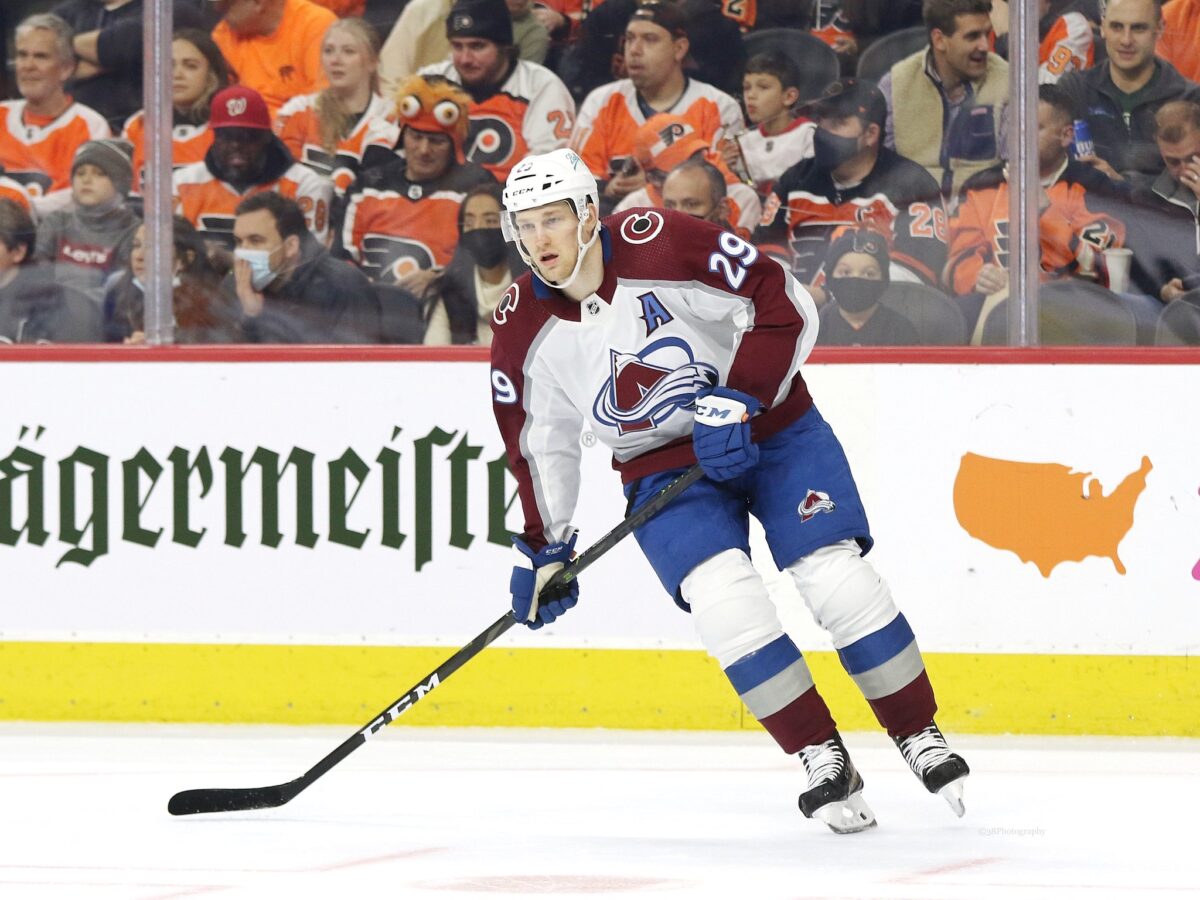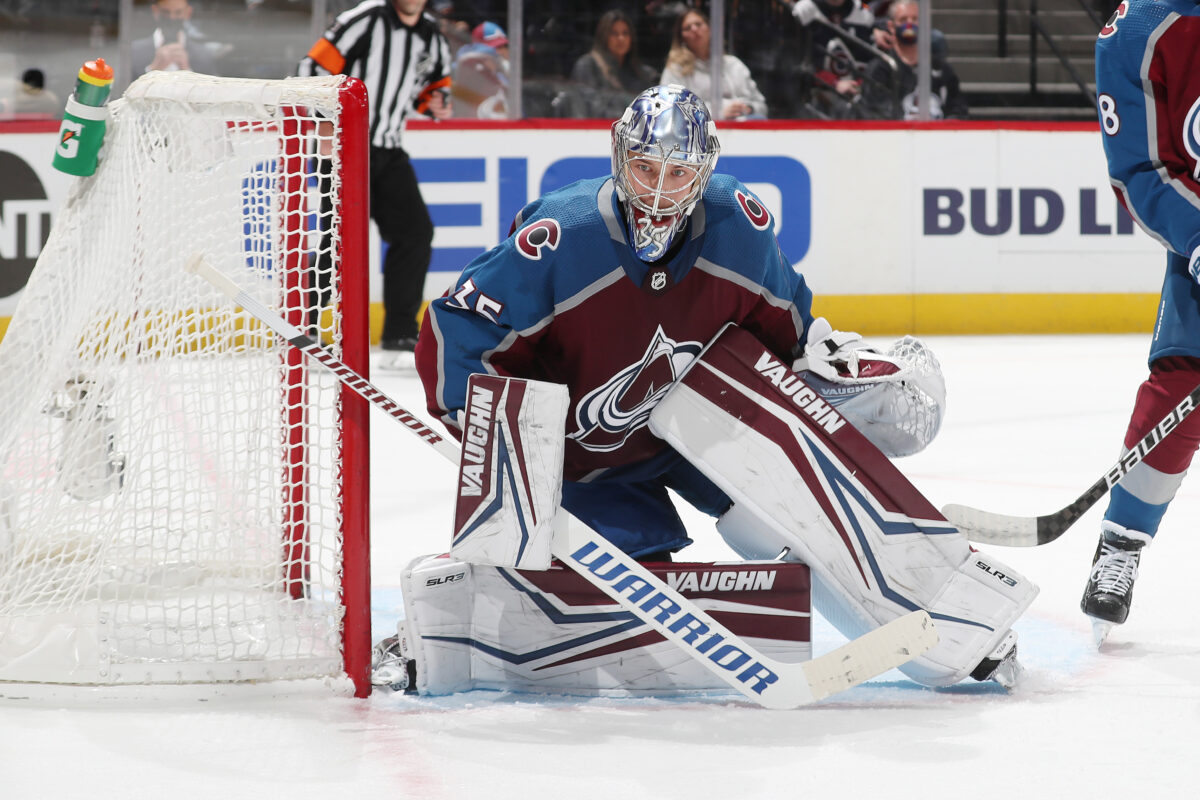Another year is in the books, and 2022 now adorns our calendars, reminding us of the eternal march of time. Beyond being more aesthetically pleasing than 2021, 2022 also represents the unofficial second half of the 2021-22 NHL season, with around a third of the campaign providing a solid base of information to analyze as the league vaults into a new year. Here are three interesting trends to keep an eye on for the Colorado Avalanche in 2022 as the franchise hopes to deliver on its obvious Stanley Cup potential.
Colorado’s Red-Hot Offense Leading NHL
Despite frequently trotting out an incomplete lineup through the first third of the season, the Avalanche offense has picked up where it left off last year, once again leading the league in goals per game. Their current scoring rate (4.22) is nearly half a goal higher than the next best team in the Minnesota Wild (3.74). The difference between the Avalanche and Wild in first and second is akin to the gap between second and the ninth-place Toronto Maple Leafs (3.27), highlighting the extent of Colorado’s fearsome firepower.

Their absurd finishing efficiency is driving the Avalanche’s vaunted offense, but they still rank highly in shot- (seventh) and scoring-chance generation (sixth) at 5-on-5. If the team is able to run out a consistent lineup for the rest of the season, it follows that their improved chemistry should maintain, if not ramp up, the pace. That they’ve managed to score so often even as Nathan MacKinnon is in the midst of a significant shooting slump (4.5 percent conversion) is a good look for the team’s supporting cast.
Mikko Rantanen (14), Cale Makar (13), and Andre Burakovsky (12) lead the way in goals, while Nazem Kadri paces the Avalanche in points (38) as their offensive compass. If the franchise is to overcome the shakiness of their goaltending group, their attack must continue firing on all cylinders.
Ineffective Penalty Kill Limiting Avalanche
Without a pair of trusted special teams, guaranteeing extended playoff success is next to impossible. While Colorado’s contingent of offensive stars means that the power play isn’t an issue (10th in efficiency), the penalty kill is a different story. Despite being tied for the league lead in shorthanded goals (six), the Avalanche are the uneasy owners of the 26th-ranked penalty kill, successfully killing off only 75.6 percent of opposing power-play opportunities. The offseason departure’s of defenseman Ryan Graves (second in average ice time while shorthanded) and Pierre-Edouard Bellemare (ninth) loom large, and their absences have depleted last season’s eighth-best penalty kill.
Related: 3 Avalanche Trade Targets To Fix Penalty Kill
Although part of the unit’s struggles is owed to their netminding (23rd in save percentage on the penalty kill), they haven’t made it easy for those manning the crease. They concede an inordinate number of quality opportunities (27th in expected goals against per-60), likely owing to the fact that they look to take greater positional risks for the potential of a shorthanded goal. It hasn’t worked out as expected, but the logic underlining the strategy is sound.
Using historical precedent can help teams identify potential areas of improvement, and the Avalanche are no different. It’s a small sample and there are a number of conflating factors at play, but four of the NHL’s last five Stanley Cup winners boasted a penalty kill that ranked within the top-half in terms of efficiency in the regular season.
| Team | Penalty Kill Efficiency (%) | NHL Rank |
|---|---|---|
| Tampa Bay Lightning (2020-21) | 22.2 | 9 |
| Tampa Bay Lightning (2019-20) | 23.2 | 5 |
| St. Louis Blues (2018-19) | 21.1 | 10 |
| Washington Capitals (2017-18) | 22.5 | 7 |
| Pittsburgh Penguins (2016-17) | 23.1 | 3 |
It’s not a necessary requirement for going deep into the postseason, but possessing a reliable penalty kill is a common trait shared among the most successful teams come playoff time. For a competitive Avalanche club, addressing their potential Achilles’ heel must be a priority in the months ahead.
Shaky Goaltending Cause for Concern in Avalanche Net
When the Avalanche traded for Darcy Kuemper this past offseason, it was unlikely that they anticipated the inconsistency that has plagued his first season in Denver. Even against the backdrop of Colorado’s sturdy defensive structure (fifth in scoring chances and expected goals against per-60 at 5-on-5), the former Arizona Coyote is underperforming relative to expectations (minus-1.8 goals saved above expected per MoneyPuck).
The rest of their goalie carousel hasn’t fared much better either. Each of the four netminders to have featured in the Avalanche net this season have allowed more goals than expected, undermining Colorado’s live-wire offense. One of the four, Jonas Johansson, was recently claimed by the Florida Panthers, which reduces the team’s already limited number of options.

It hasn’t significantly hurt them to this point, but general manager Joe Sakic has to be contemplating whether a trade is in the best interests of his club’s immediate future. Neither Kuemper nor backup Pavel Francouz are signed beyond this season, and their various struggles with health and on-ice play undercut any future contract discussions. For a Stanley Cup favourite, that’s a lot of uncertainty to carry into 2022.
What Does 2022 Have in Store for the Avalanche?
In spite of a barrage of injuries and COVID-related absences, the Avalanche lead the NHL’s Central Division in points percentage. With Nathan MacKinnon inching closer to a potentially earth-shattering contract extension, and key contributors in Kadri and Burakovsky angling for hefty new contracts of their own, 2022 is one of the team’s final attempts at a Cup before the salary cap throws a wrench in their competitive timeline. The early returns are promising, but do the Avalanche ultimately have what it takes to bring a third championship to Colorado?
Data courtesy of Hockey Reference, MoneyPuck, and Natural Stat Trick.